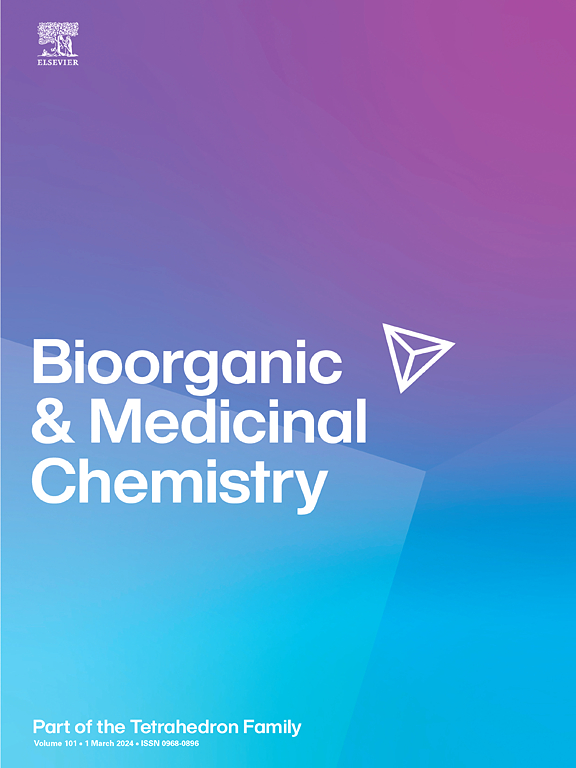Inhibition of amyloid fibrillization of amyloid β peptide by 4,7-disubstituted coumarin derivatives
IF 3
3区 医学
Q2 BIOCHEMISTRY & MOLECULAR BIOLOGY
引用次数: 0
Abstract
Coumarins are well-known for their unique chemical structure and a wide range of biological effects. Various substituted coumarin-based compounds have emerged as promising candidates for the development of novel therapeutic agents against numerous diseases. This study was focused on the synthesis of new 4,7-disubstituted coumarin derivatives and investigation of their ability to inhibit the aggregation of Aβ40 peptide, their cytotoxic effect on SH-SY5Y cells, their antioxidant properties, and their ability to penetrate the blood-brain barrier (BBB). The results revealed that the trihydroxy derivatives 5a-c had been the most effective inhibitors of Aβ aggregation, promoting the formation of non-toxic, amorphous aggregates instead. Importantly, no significant decrease in the viability of SH-SY5Y neuroblastoma cells was observed after treatment with the studied coumarins. Among them, coumarin 5a demonstrated the strongest antioxidant activity, while compound 5b also exhibited good antioxidant properties, along with the best inhibition of Aβ aggregation (IC50 = 13.5 μM), and adequate permeability across the blood-brain barrier. These findings suggest that compound 5b is a promising candidate for further investigation in Alzheimer's disease pharmacotherapy.

4,7-二取代香豆素衍生物对淀粉样β肽淀粉样纤维化的抑制作用
香豆素以其独特的化学结构和广泛的生物效应而闻名。各种取代香豆素为基础的化合物已经成为开发新的治疗药物对抗许多疾病的有希望的候选人。本文主要研究了新型4,7-二取代香豆素衍生物的合成及其抑制a - β40肽聚集的能力、对SH-SY5Y细胞的细胞毒作用、抗氧化性能和穿透血脑屏障(BBB)的能力。结果表明,三羟基衍生物5a-c是Aβ聚集最有效的抑制剂,反而促进了无毒无定形聚集体的形成。重要的是,用香豆素治疗后,SH-SY5Y神经母细胞瘤细胞的活力没有明显下降。其中,香豆素5a的抗氧化活性最强,化合物5b的抗氧化性能也较好,对Aβ聚集的抑制效果最好(IC50 = 13.5 μM),并具有良好的血脑屏障渗透性。这些发现表明,化合物5b在阿尔茨海默病药物治疗方面有进一步研究的前景。
本文章由计算机程序翻译,如有差异,请以英文原文为准。
求助全文
约1分钟内获得全文
求助全文
来源期刊

Bioorganic & Medicinal Chemistry
医学-生化与分子生物学
CiteScore
6.80
自引率
2.90%
发文量
413
审稿时长
17 days
期刊介绍:
Bioorganic & Medicinal Chemistry provides an international forum for the publication of full original research papers and critical reviews on molecular interactions in key biological targets such as receptors, channels, enzymes, nucleotides, lipids and saccharides.
The aim of the journal is to promote a better understanding at the molecular level of life processes, and living organisms, as well as the interaction of these with chemical agents. A special feature will be that colour illustrations will be reproduced at no charge to the author, provided that the Editor agrees that colour is essential to the information content of the illustration in question.
 求助内容:
求助内容: 应助结果提醒方式:
应助结果提醒方式:


